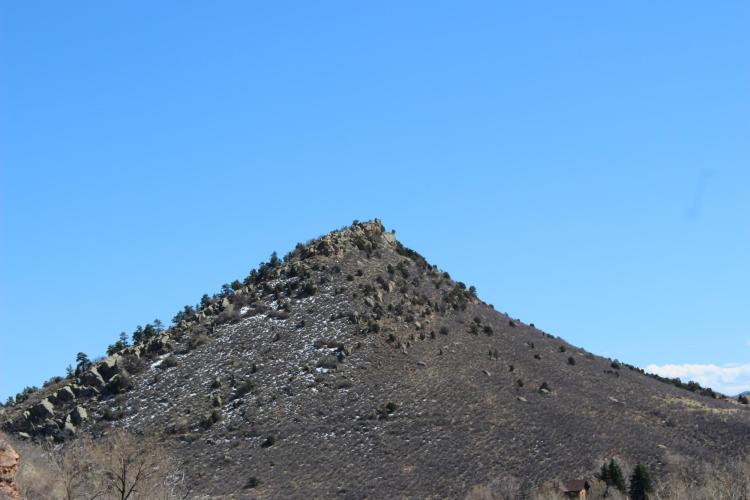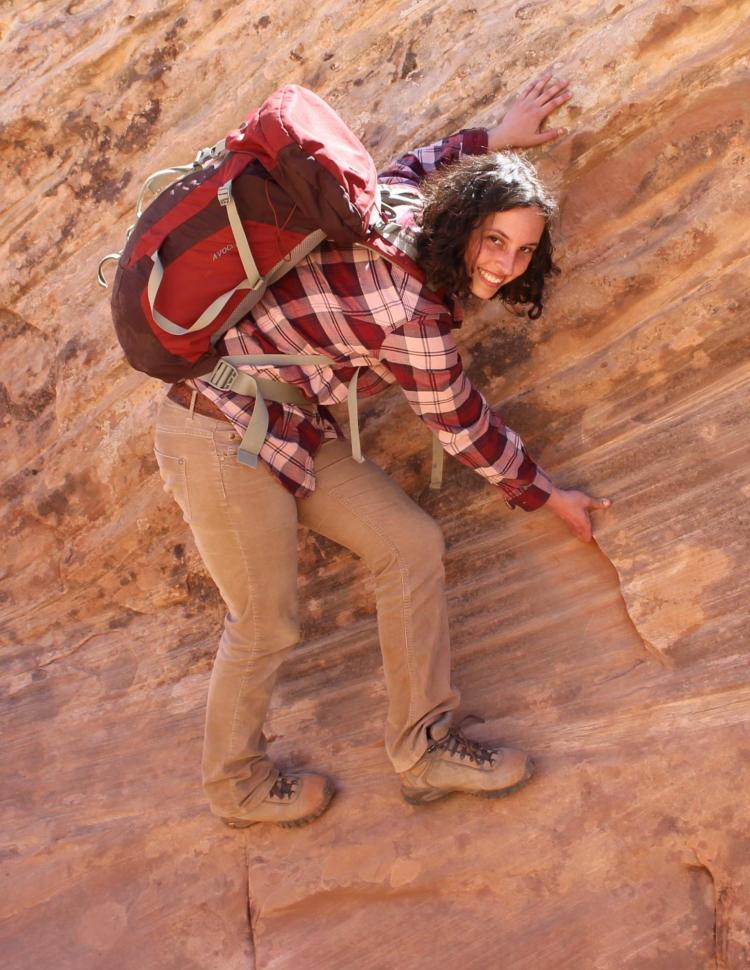What's up, and what's going down, with hogbacks
‘The cool thing is that this was motivated by looking at the hogbacks right outside our windows; no one had explained their shape before,’ says Rachel Glade
Most Coloradans take the dramatic neighboring landforms for granted, including the iconic hogback hills of the Front Range. Perhaps that is because few wonder about why landforms look the way they do or think in terms of geomorphology. But not so for a graduate geology student at the University of Colorado Boulder.

A familiar hogback near Morrison, Colo.. Photo by Rachel Glade. At top of the page is an arial view of hogback formations near Fort Collins. Photo by Robert Anderson.
According to current geomorphology models that study how landscapes erode and change over time, most hills are convex, which means they are steep at the bottom then gradually level out on top, like a dome. Hogbacks found across the world and even on Mars look different. One side is straight and made of rock; the other side, which is concave, has a gradual slope at the bottom that gets steeper and steeper uphill, like half of a bowl.
“The cool thing is that this was motivated by looking at the hogbacks right outside our windows; no one had explained their shape before,” said PhD candidate Rachel Glade, who has recently published two papers on the subject, through the Geological Society of America and the American Geophysical Union, respectively.
Glade said she was also inspired by her thesis advisor, Robert Anderson, a distinguished professor in the Geological Sciences Department of the College of Arts and Sciences at CU Boulder and a fellow in the CU Institute of Arctic and Alpine Research. Anderson is a co-author on the two studies.
“Bob, my advisor, is always thinking about new, open questions in geology” Glade said. “One of these questions is about big boulders and blocks of rock. We don’t really know how they influence landscapes, including rivers and glacial environments, and we thought, ‘There are very few papers about these blocks on hillslopes.’”
Turns out, big blocks may be a big deal in how those hogbacks keep that iconic, concave shape.
In sedimentary formations, hogbacks are formed when the formation is tilted, like the Flatirons, and there is a softer layer of rock underneath a hard layer on the top. The softer layer is eroded more quickly, leaving way to the easily distinguished steep escarpments at the top of hogbacks, which are pretty much the entirety of the harder formation showing.

Rachel Glade at work in the field.
The erosion of the underlying soft rock, shale, is also undermining the support of the harder rock, sandstone, that forms the top of the hogback. That means that large pieces of the sandstone periodically cleave away, much the same way that tall glaciers entering the sea often dramatically calf off huge blocks of ice.
But here is where it gets interesting for geomorphologists. This situation is constantly, although slowly, changing, as erosion not only moves the hogback vertically, decreasing its elevation, but horizontally, as well. So how is it that they are able to maintain that concave form while they move?
“When these blocks fall off at the top of the hogback, we think that they sit there on the soil for a long time while they slowly break apart, and then slowly move down the slope,” Glade said.
“They are basically like big dams; soil builds up behind them, and has to go around them to move downhill. This makes the ground steeper; the bigger the blocks, the steeper the slope. As the blocks get smaller down the hillslope, the ground doesn’t have to be as steep, which is why it’s a much gentler slope at the bottom.”
Of course, there was some very complex geophysical modeling that went along with the two papers, but there was one more element about that study that all of us living around these landscapes can view and appreciate. “These big blocks make it harder to erode the landscape, leading to taller, more prominent hogbacks that can maintain a stable shape,” Glade said.
"That is, even as the blocks move downslope and begin to break up, they are causing the landscape to have more relief,” said Glade.
The papers are a reflection of her PhD thesis.

